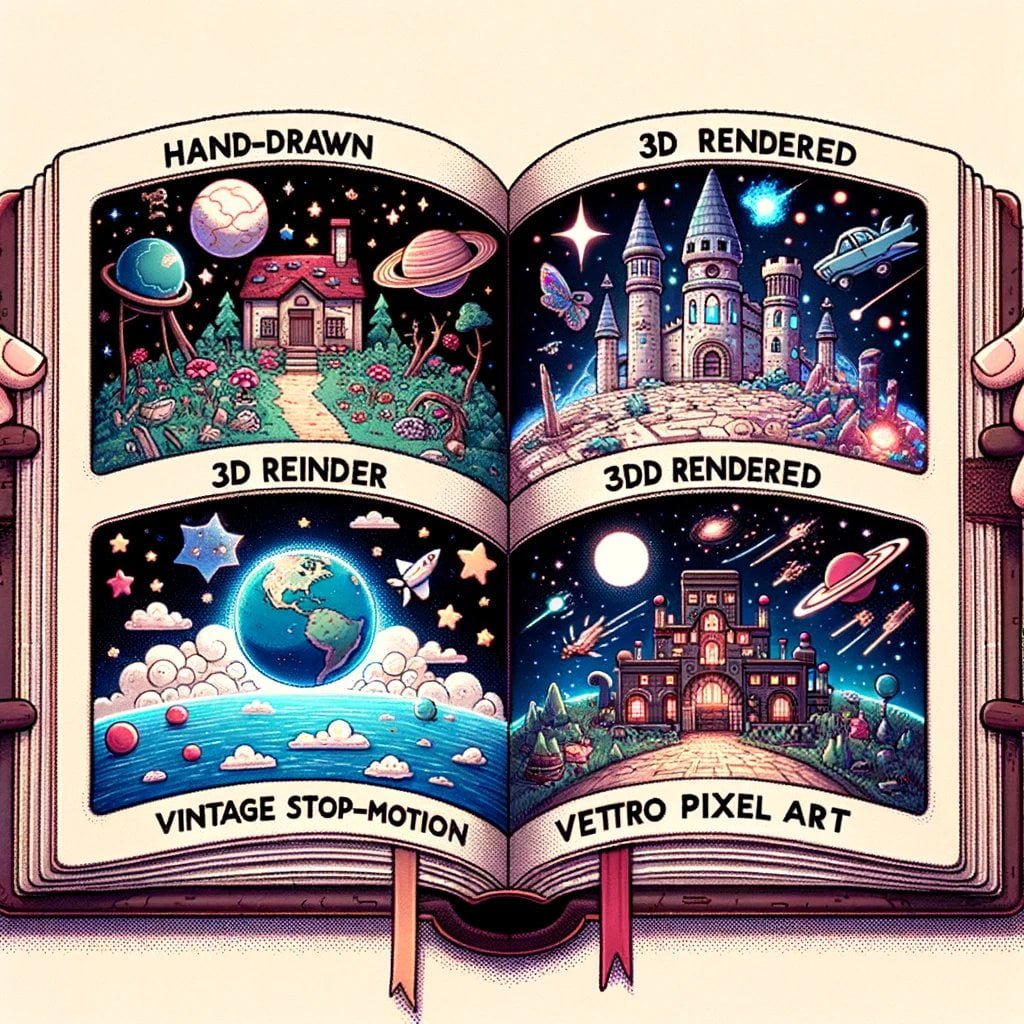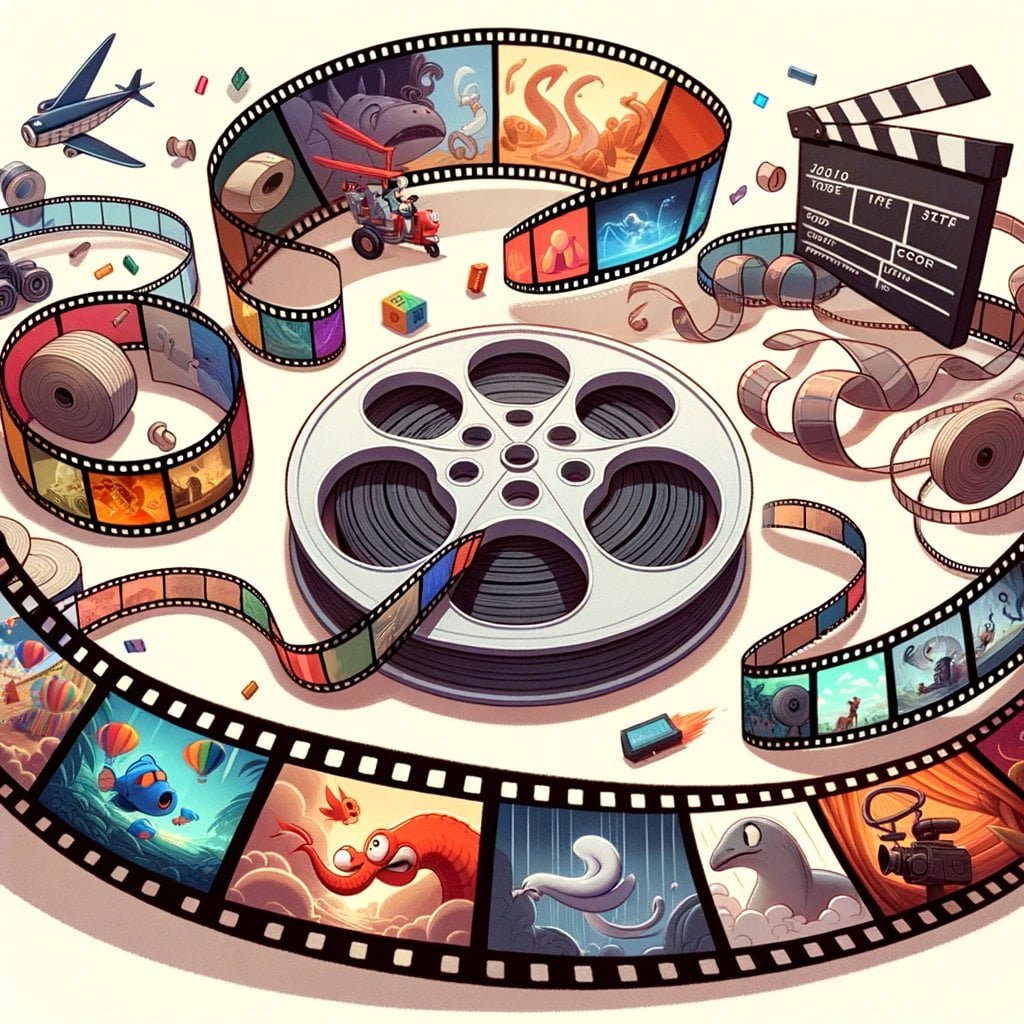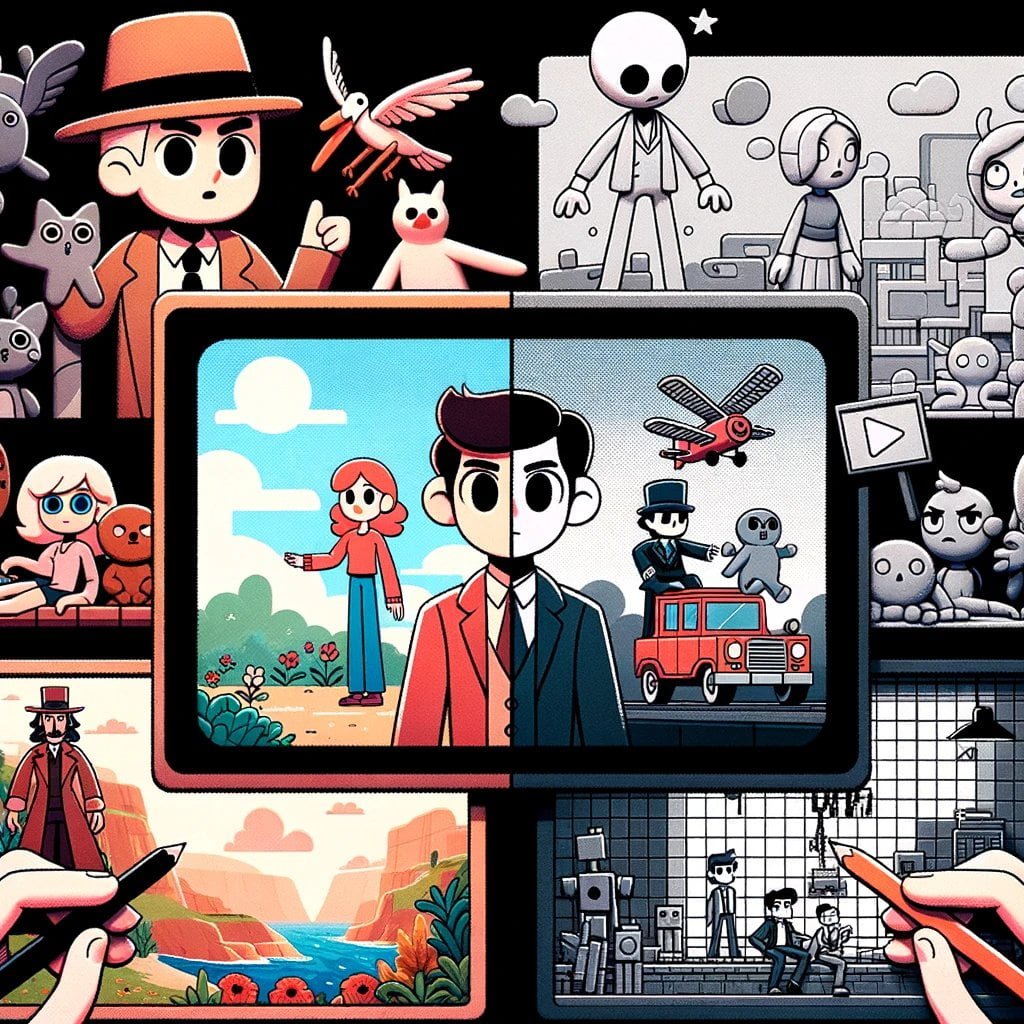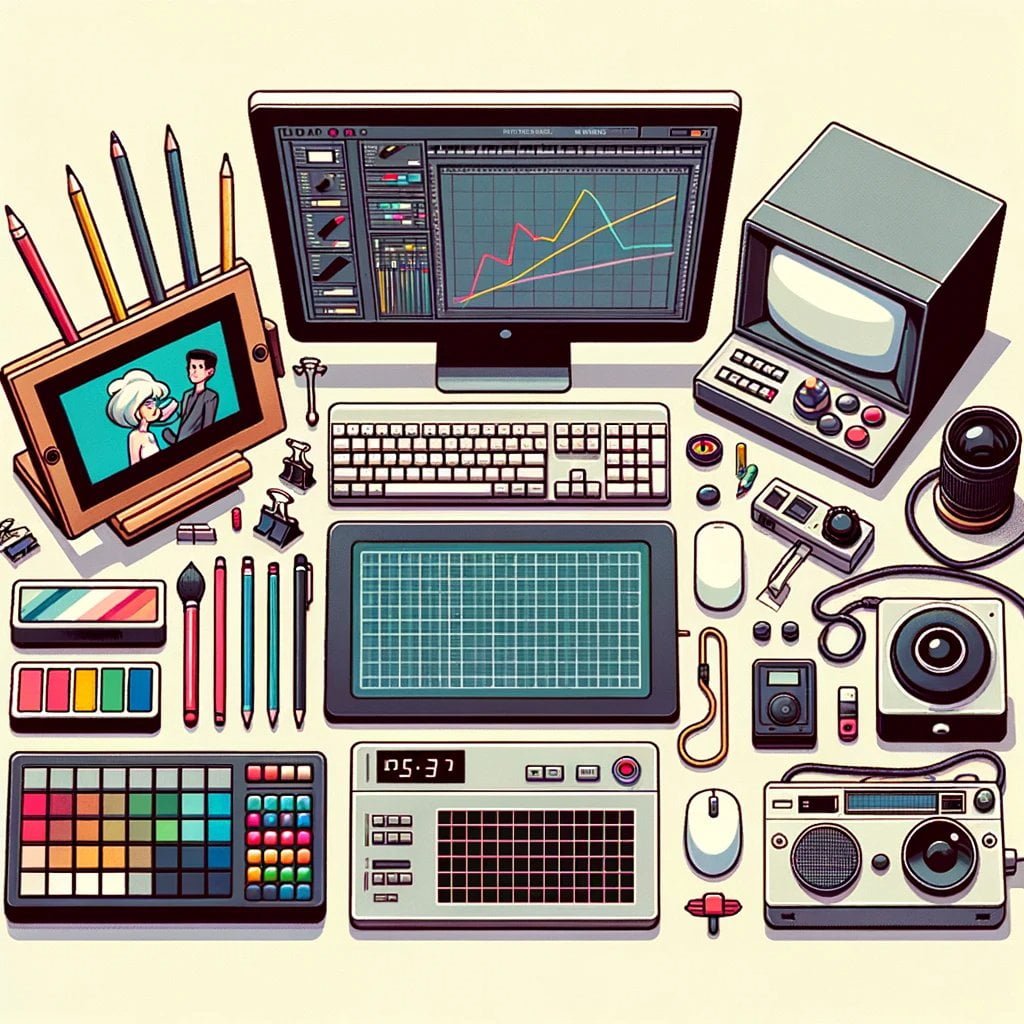Embrace the ever-evolving realm of animation. This article aims to provide an in-depth exploration of the intriguing domain of animation types. Irrespective of one’s inclination towards hand-drawn classics or the astounding progressions in computer-generated animation, this investigation is certain to captivate you. I will provide you with comprehensive guidance on the diverse animation techniques, encompassing the classic allure of 2D animations as well as the state-of-the-art marvels of 3D, stop motion, and motion graphics animations, based on my extensive experience in the industry. Therefore, fasten your seatbelts and prepare to embark on an exhilarating voyage through the boundless potential of animation craftsmanship!
Types Of Animation
There are a number of prevalent typefaces that are utilized frequently in animation. Particular attributes and uses are associated with each variety. You can discover and produce an assortment of enthralling animations by gaining knowledge of these various subtypes.
Conventional Graphics
Traditional animation is regarded as one of the seminal techniques in the profession. By hand, each frame is rendered on canvas or paper using this method. Characters and settings must be brought to life with talent and accuracy. With its ageless allure, traditional animation has been utilized for decades. Classic animated films and animations frequently feature it.
“Traditional animation captures the artistry and charm of hand-drawn animation, bringing characters and stories to life with every stroke of the pencil.”
Stop-motiontanimationn
By manipulating physical objects and photographing them frame by frame, stop-motion animation is a technique. Even action figures, figurines, or clay figures may be utilized. Minor adjustments are made to each frame, which, when viewed sequentially, produces the illusion of motion. The unique allure of the visuals is enhanced by the tactile quality of stop-motion animation.
“Stop motion animation allows inanimate objects to come alive, creating whimsical worlds through the meticulous arrangement of objects and capturing their movement one frame at a time.”
Cartoon in 3D
As computer software has evolved, the prevalence of three-dimensional animation has grown. Animating digital models through the use of computer software is the process involved in this form of animation. Ideal for film and video game productions, it imparts an unprecedented degree of realism and depth to animation. With the assistance of 3D animation, animators are capable of crafting captivating, immersive environments.
“3D animation pushes the boundaries of imagination, transporting viewers into richly detailed worlds filled with lifelike characters and breathtaking visual effects.”
Animation of Typography
Animation in the style of typography conveys a message or narrates a story through the use of text and typefaces. It is noticeable in Graphical Motion, commercials, and title sequences. Producing visually captivating and influential animations, typography animation merges the craft of typography with animation methodologies.
“Typography animation transforms static text into dynamic works of art, giving words a voice and unleashing their expressive potential.”
Animated Clay
Utilizing clay structures and figures, clay animation is a subgenre of stop-motion animation. Frame by frame, the animation is constructed through the manipulation of the clay figures. In terms of character development and narrative, clay animation offers a limitless array of possibilities. Resulting in endearing and fanciful visuals, the clay’s malleability imparts a natural and organic quality to the animations.
“Clay animation brings pliable characters to life, taking viewers on a journey through a world molded by imagination and creativity.”
A rotoscoping
In order to create convincing animation, rotoscoping involves tracing over live-action footage. Animation commonly employs it to generate fluid and intricate motion. Animations that feel natural and realistic are the result of animators incorporatingthemhe subtleties of human movement into animated characters via rotoscoping.
“Rotoscoping bridges the gap between reality and animation, infusing animated characters with the grace and fluidity of human movement.”
Such is anime.
Japanese animation is the birthplace of the aninstyle. Character designs and genres are unique to it. There are devoted fans of anime due to its worldwide popularity. This animation style is highly adaptable due to its broad spectrum of themes and narrative techniques.
“Anime mesmerizes with its striking visuals, unique character designs, and compelling narratives that captivate audiences across the globe.”
Animated Cutouts
Paper or cardboard backgrounds and planar characters are utilized in cutout animation. To produce an animation, the characters are eliminated and altered. Ideal for projects with stringent time constraints, this method enables rapid and adaptable animation. Adding a sense of melancholy to animations, cutout animation can be used to generate whimsical and endearing visuals.
“Cutout animation breathes life into two-dimensional characters, transforming flat elements into dynamic and visually engaging animations.”
Motion Graphics
In order to generate dynamic visuals, motion graphics employ graphic elements including shapes, logos, iconography, and charts. Promotional materials, title sequences, and advertisements frequently employ it. By injecting information or augmenting narratives through dynamic movement, motion graphics infuse animations with vitality and aesthetic appeal.
“Motion graphics harness the power of visual design and dynamic animation to deliver information and captivate audiences with visually compelling narratives.”
Substantially dynamic and diverse is, in conclusion, the realm of animation. Each category presents distinct potentialities for materializing concepts and narratives, ranging from conventional hand-drawn animation to state-of-the-art 3D animation. You can discover uncharted creative territories and stretch the limits of animated narratives by investigating the various forms of animation. Prepare yourself to be enthralled and motivated by global audiences as you embark on an animation voyage using a computer, pencil, or clay.
Animation is a fascinating art form that has captured the hearts of millions around the world. If you’re curious about the magic that goes into creating animated masterpieces, you’ve come to the right place. Dive into the enchanting world of animation and discover mind-blowing facts about the process, techniques, and history. Prepare to be amazed by the evolution of this captivating art form and learn why animation continues to captivate audiences of all ages. Click here to uncover some mind-boggling facts about animation: facts about animation.
Types Of Animation
Animation is a captivating art form that has evolved over the years, offering a wide array of styles and techniques to bring stories to life. Whether it’s the smooth movements of traditional hand-drawn animation or the stunning visual effects of computer-generated animation, there are different types of animation that cater to every taste. From 2D animation to stop-motion animation, each style brings its own unique charm and storytelling power. For those interested in exploring the different types of animation, we have compiled a list of URLs that will take you on a journey through the world of animation. Experience the magic of different types of animation by clicking on the following links:
Discover the versatility and creativity of animation with just a click. Start exploring the boundless possibilities of animation and prepare to be amazed by the artistry and imagination behind each technique. So, what are you waiting for? Dive into the world of animation and let your imagination run wild!
The History of Animation — Types of Animation Styles Explained
Since its inception, animation, a form of filmmaking that imbues still objects with life, has been an integral component of the medium. Using a variety of techniques, artists have long attempted to persuade their audience that their drawings are in motion. “Animation” is derived from the Latin term “animatio,” which signifies the imparting of life. This article aims to explore the various classifications of animation and their historical development.
In the 20th century, traditional animation, which was alternatively referred to as cell animation, dominated the field of animation. Each frame was hand-drawn by animators on translucent paper. 1900 saw the release of “The Enchanted Drawing” by J. Stuart Blackton, the first film to feature hand-drawn animation. Moving forward significantly, Emile Cole produced “Fantasmagorie” in 1908, which is regarded as the earliest animated film to employ conventional animation techniques. The cell animation process, which was invented in 1915 by Earl Hurd and John Bray, involved the placement of moving subjects on transparent sheets atop a stationary background. This innovation significantly improved the efficiency and effectiveness of the animation process.
Walt Disney, a highly influential figure in the history of animation, implemented an assembly line production method and streamlined the animation process. Since the release of “Snow White and the Seven Dwarfs” by Disney in 1937, the process of creating traditional animation has remained relatively consistent. Initiated by Disney animators Ollie Johnston and Frank Thomas, the 12 principles of animation have since become a set of guiding principles for animators around the globe.
Another animation technique, rotoscoping, entails the incremental tracing of frames over live-action footage. By projecting live action footage onto alive-actiont easel and sketching a silhouette of the subject, Max Fleischer patented this method. Fleischer was thus capable of simulating realistic movement while situating the subject in any environment. Animation and filmmaking have been profoundly impacted by rotoscoping, which has even had an effect on motion tracking.
Anime,ginated in Japan, differentiates itself from American animation through its emphasis on intricate visuals as opposed to motion. Anime is drawn on threes, with a new image appearing every three frames, whereas traditional animation in the United States is typically drawn on ones or twos, with a new image appearing every one or two frames. This permits greater image detailcameranime frequently utilizes a more dynamic camera with tilts, pans, and zooms.
In motion animation, objects are animated through the use of photographs that capture them in marginally modified positions. In the early days of cinema, filmmakers such as George Melies employed stop motion to simulate the motion of inanimate objects. Claymation emerged as a prevalent style of stop-motion animation during the 1970s, wherein characters were sculpted using plasticine clay or other malleable materials.
Cut-outof the earliest forms of animation, cut out animation creates the illusion of motion by capturing objects in subtly altered positions, such as fabric or paper. This method was found to be more cost-effective and required less time compared to conventional animation. South Park initially implemented the perforation technique and has since implemented computer-generated software to maintain its aesthetic.
While 3D computer animation has emerged as the prevailing style of animation in the twenty-first century, It denotes digitally rendered animation that possesses a profundity that is unattainable in conventional animation. Utilizing applications such as Adobe Animate, After Effects, and Toon Boom Harmony, animators are able to digitally manipulate and create individual elements within characters.
Animation has evolved continuously over the course of history, adjusting to new technologies and trends. Every animation technique, including rotoscoping, tradicut-outanimation, stop motion, cut out animation, and 3D computer animation, has made a unique and significant contribution to the intricate fabric of animated narratives.
FAQ
Initial Question
Define conventional animation.
Initial Response
Each frame in traditional animation is rendered by hand on cels or paper. It is an ageless technique of animation that has been implemented for decades.
Second Question
What is animation in stop-motion?
Answer Two
Stop motion Animation consists of photographing and manipulating tangible objects frame by frame. It may even require the use of actiographic,motionines, or clay figures.
Third Question
Define 3D animation.
Three Answers
Animating digital models in three dimensions requires the use of computer software. As a result of developments in computer software, the prevalence of 3D animation has grown. This animation style is frequently observed in films and video games.
Fourth Question
How is typography animation defined?
Response Four
Text and fonts are utilized in typography animation to communicate a message or tell a story. Commercials, title sequences, and motion graphics all contain it.
Cinquisite 5
Rotoscoping animation is what?
5th Answer
Live-action footage is superimposed with rotoscoping to generate realistic animation. It is frequently used in animation to generate fluid and intricate motion.
- China II Review: Delicious Food & Speedy Service - April 17, 2025
- Understand Virginia’s Flag: History & Debate - April 17, 2025
- Explore Long Island’s Map: Unique Regions & Insights - April 17, 2025



















